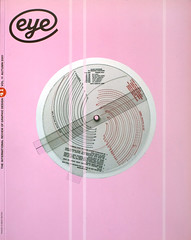Autumn 2001
Who’s zooming whom?
Minus Equals Plus
Istvan Banyai<br>Harry N. Abrams, £19.95Almost twenty years ago, when I first saw Hungarian illustrator Istvan Banyai’s portfolio, he was just one of many Eastern European illustrators who made the pilgrimage from the Soviet Block to The New York Times where I am an art director. For a decade before and many years hence, the Times Op-Ed page and Book Review section published numerous émigré and foreign artists, from Roland Topor to Eugene Mihaesco to Mirko Ilic. The joke was that all one needed to gain entré was an unpronounceable name. But in fact, the surrealist visual language that these artists employed to circumvent censorious regimes was a perfect in the Times. Banyai’s work conformed to the ‘Times Style’ of conceptual or idea illustration, but was also distinct from the typical nineteenth-century Grandville-inspired, cross-hatched, surrealist technique that was common and ultimately became a cliché in the paper. In contrast, Banyai’s line was clean, open, and animated. Frankly, though, I thought he used too many clean, open, animated lines as stylistic tropes - his style overpowered his ideas.
A number of years later I saw Zoom, a wordless children’s book that Banyai had authored. It was then I realised that he had finally found his true métier. The book, which owes a debt to Charles Eames’ Power of Ten, is a beautifully rendered and smartly composed virtual movie (between covers) wherein the artist zooms in and out of a world of his making, creating pictures within pictures within pictures. It was the perfect use of his schematic linear approach and bold flat colour sense. It did not rely on a single visual idea, but allowed for many to emerge throughout the visual narrative. And because it is obsessively complex it is totally engaging. My young son and I were so captivated by the vision and drawings in Zoom that the wonderfully titled sequel, Re-Zoom, was eagerly embraced and pored over for months. Indeed both books are virtuoso efforts that solidify his reputation as a masterful visual storyteller.
Banyai’s work continued to develop after Zoom and Re-Zoom. He became an excellent colourist and his line became even more fluid. His illustrations appear regularly in many American magazines, and notably accompanying the humour pieces (‘Shouts and Murmurs’) in The New Yorker, adding vitality to the pages. But I am still much more engaged by his sequential, kinetic drawings than the one-off spots because even his best concepts are more like a decorative vignette than memorable icon. For me, this is underscored by the work presented in his new monograph Minus Equals Plus, a collection of sequential and single image illustrations. Sadly, the virtuosity he reveals in Zoom is diminished in this veritable catalogue of style.
Illustrators’ monographs are tricky affairs because they invite excess. The need to stuff everything ever produced into one volume can have a deleterious, egotistical effect. In Banyai’s case, his genuinely beautiful sequential images are scrunched onto spreads, like frames of a 35mm film in some art directors’ annual, while the lesser drawings are sometimes given too much air. This is not to imply that all the single images are inferior. There are some wonderful stand-on-their-own illustrations, such as ‘La Veneziana’ (p134) from Playboy magazine, and ‘Mondrian’ (p153) from New York Magazine, neither of which requires an accompanying text for the viewer to appreciate them.
Editorial illustration has suffered the ill-effects of designers who use Photoshop as an alternative illustration method and stock-houses are filling the market with cliché knock-offs, so it is encouraging to see an original artist celebrated in a monograph. Banyai deserves this book. The question is, does the book do him justice?
Steven Heller, design writer, New York
First published in Eye no. 41 vol. 11, 2001
Eye is the world’s most beautiful and collectable graphic design journal, published quarterly for professional designers, students and anyone interested in critical, informed writing about graphic design and visual culture. It is available from all good design bookshops and online at the Eye shop, where you can buy subscriptions and single issues.

